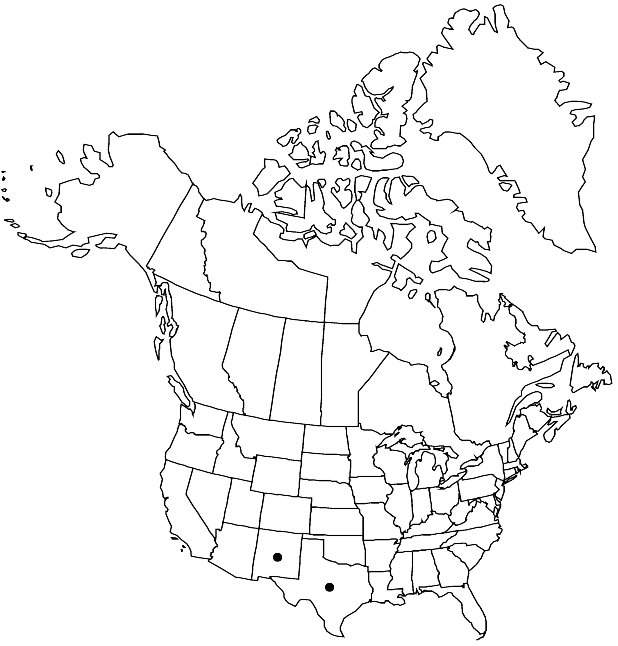Difference between revisions of "Polanisia uniglandulosa"
in A. P. de Candolle and A. L. P. P. de Candolle, Prodr. 1: 242. 1824.
FNA>Volume Importer |
FNA>Volume Importer |
(No difference)
| |
Revision as of 22:53, 16 December 2019
Perennials, 40–80 cm. Stems sparsely or profusely branched; hairs stalked, glandular throughout. Leaves: petiole green to purple, angled, 1.5–4.5(–6) cm, (glandular); leaflet blade broadly elliptic to oblanceolate, 2–4 × 1–2 cm, margins entire, apex obtuse, mucronulate, surfaces sparsely glandular. Racemes 5–20 cm (10–30 cm in fruit); bracts unifoliate, ovate, 8–12 mm. Pedicels 10–25(–40) mm. Flowers: sepals purple, oblong, 3–6 × 1.5–2.5 mm, margins entire, apex acuminate, glandular; petals white, narrowly spatulate, clawed, abaxial pair 10–20 × 2–3(–5) mm, apex emarginate to lacerate, adaxial pair 15–30 × 3–5 mm, apex emarginate; nectary glands bright orange, not conspicuous (in fruit); stamens 20–27, exserted, purple, 20–50 mm; anthers purple, 1–1.3 mm; gynophore 0–2 mm in fruit; ovary 5–10 mm; style deciduous in fruit, 20–40 mm; stigma purple. Capsules (somewhat inflated), 60–100 × 7–10 mm, reticulate, glandular. Seeds 20–65, dark reddish brown, globose to oblong, 1.5–2 mm, smooth. 2n = 20.
Phenology: Flowering spring–fall.
Habitat: Pinyon, juniper, and oak woodlands, arroyos, riverbeds, roadsides, pastures
Elevation: 300-800 m
Distribution

N.Mex., Tex., Mexico.
Discussion
Polanisia uniglandulosa is the only perennial species of the genus, notable for its large, showy, white petals and silky-iridescent seed testa.
Selected References
None.